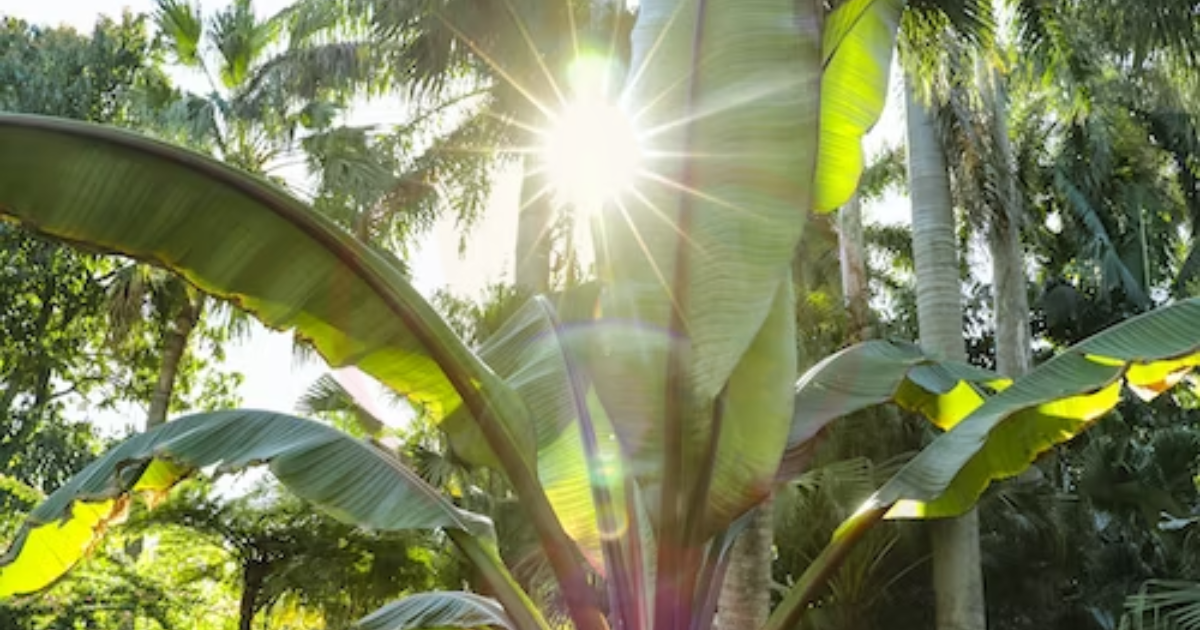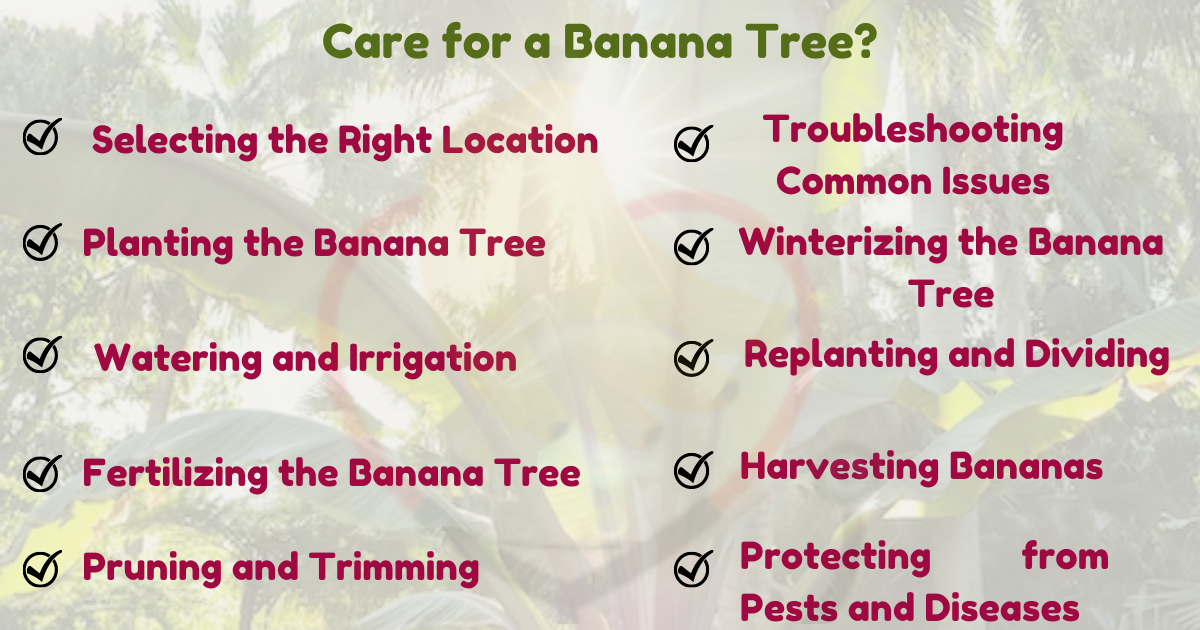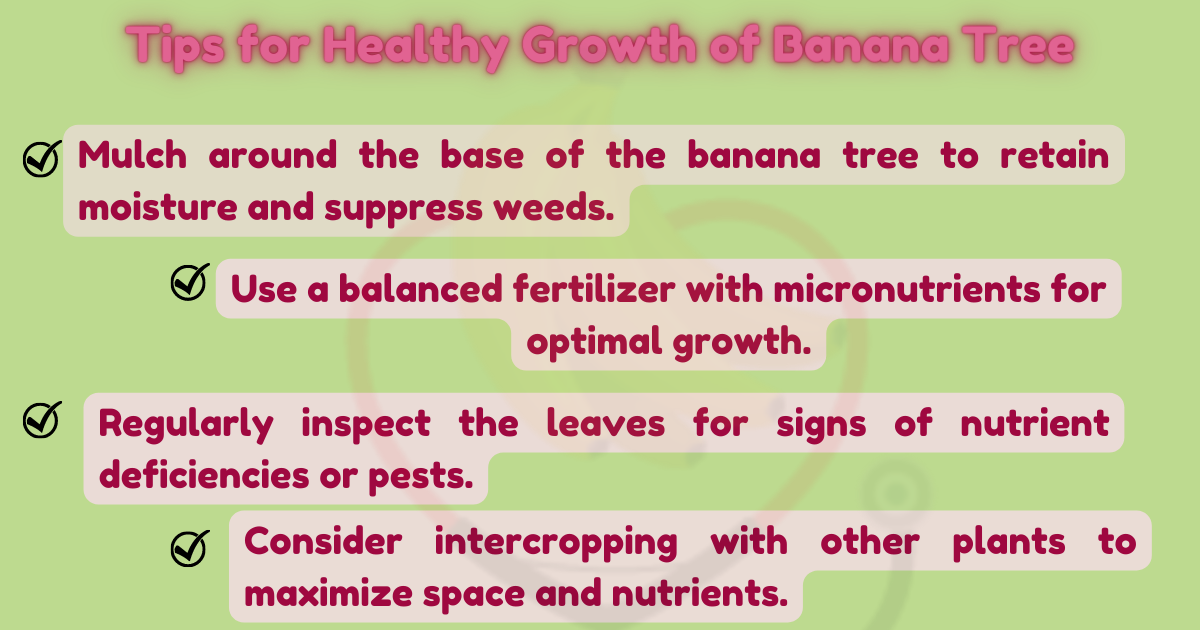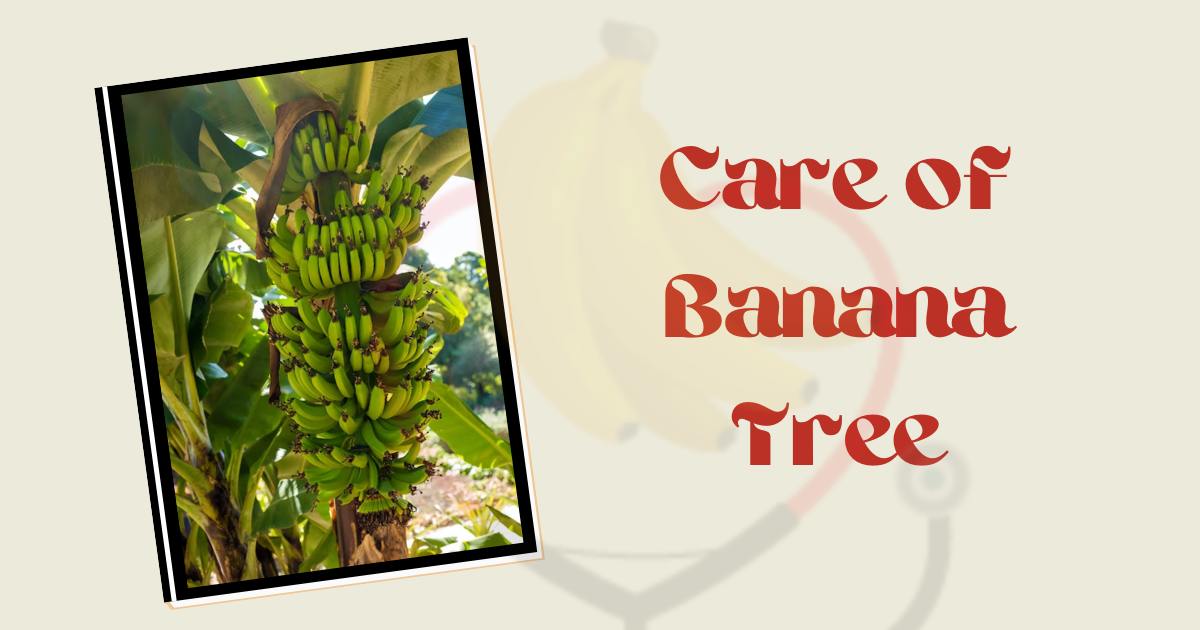Banana trees (Musa spp.) are a delightful addition to any garden or landscape.
It offers not only delicious fruit but also lush greenery that enhance the aesthetic appeal of your outdoor space. [1]
Whether you’re a seasoned gardener or a beginner, providing the proper care for a banana tree is essential to ensure its health and productivity.
In this article, we will guide you through the various steps of how to care for a banana tree and bearing delicious fruits year after year.

Care for a Banana Tree
Here we discuss different steps about how to care for a banana tree.
Selecting the Right Location
The first step in caring for your banana tree is choosing the perfect location.
Banana trees thrive in full sunlight and require at least 8 to 10 hours of direct sunlight per day.
They also prefer well-draining soil with a slightly acidic to neutral pH level.
Ensure that the chosen location is sheltered from strong winds to prevent damage to the plant.

Planting the Banana Tree
When planting your banana tree, dig a hole that is slightly larger than the root ball.
Gently remove the tree from its container and place it in the hole, ensuring that the top of the root ball is level with the ground.
Backfill the hole with soil and tamp it down firmly. Water the newly planted tree thoroughly to help it establish its root system.
Watering and Irrigation
Banana trees require consistent and adequate watering to flourish. During the growing season, keep the soil evenly moist, but not waterlogged.
A drip irrigation system is ideal for providing a steady supply of water to the roots.
Adjust the watering frequency during the colder months to prevent waterlogging and root rot.
Fertilizing the Banana Tree
To promote healthy growth and fruit production, fertilize your banana tree regularly.
Use a balanced fertilizer with a higher potassium content to support fruit development.
Apply the fertilizer every two to three months during the growing season, following the manufacturer’s instructions.
Pruning and Trimming
Regular pruning is crucial for a banana tree to focus its energy on fruit production. Remove any dead, damaged, or diseased leaves as soon as you notice them.
Trim away excessive suckers to maintain a manageable number of stems, allowing the plant to concentrate its resources on producing larger and tastier bananas.
Protecting from Pests and Diseases
Banana trees are susceptible to various pests and diseases, such as aphids, mealybugs, and Panama disease.
Monitor your tree regularly for signs of infestations and take prompt action to control them.
Consider using organic pesticides or natural predators to manage pest populations without harming beneficial insects.
Harvesting Bananas
The joy of growing a banana tree culminates in the rewarding experience of harvesting ripe, delicious bananas.
Wait until the fruit reaches its full size and color before picking it. Harvest the bunch when it starts to turn slightly yellow, and let it ripen further indoors.
Replanting and Dividing
As banana trees mature, they may produce offshoots or suckers around the base. These can be carefully divided and replanted to create new banana trees.
Choose healthy, disease-free suckers and ensure they have enough roots to support their growth.
Winterizing the Banana Tree
In regions with colder climates, winterizing your banana tree is crucial for its survival.
Before the first frost, cut back the foliage to a manageable height and cover the remaining stem with straw or burlap.
Additionally, consider moving potted banana plants indoors during the winter months.
Troubleshooting Common Issues
Banana trees can face several issues, such as yellowing leaves, poor fruit production, or fungal infections.
Understanding and addressing these problems promptly can save your banana tree from potential damage. Keep an eye out for any abnormalities and take appropriate measures to resolve them.
Tips for Healthy Growth

- Mulch around the base of the banana tree to retain moisture and suppress weeds.
- Use a balanced fertilizer with micronutrients for optimal growth.
- Regularly inspect the leaves for signs of nutrient deficiencies or pests.
- Consider intercropping with other plants to maximize space and nutrients.
Care for a banana tree is a rewarding endeavor that yields not only delectable fruits but also a sense of satisfaction and connection with nature.
By providing the right conditions, regular maintenance, and vigilant care, you can enjoy a thriving banana tree in your garden or even in a container on your patio.
Remember to adapt your care routine based on your climate and the specific variety of banana tree you have. Happy gardening!
Frequently Asked Questions (FAQs)
Can I grow a banana tree in a container?
Yes, dwarf banana varieties can thrive in large containers, making them suitable for patios and small gardens.
How often should I water my banana tree?
Water your banana tree regularly, providing enough moisture to keep the soil evenly moist but not soggy.
Why are the leaves of my banana tree turning brown?
Brown leaves can indicate either underwatering or overwatering. Check the soil moisture and adjust your watering accordingly.
Is it possible to grow bananas in colder climates?
Yes, you can grow cold-hardy banana varieties that can withstand lower temperatures.
When is the best time to harvest bananas?
Harvest bananas when they are fully grown and begin to turn yellow. They will ripen further after picking.

